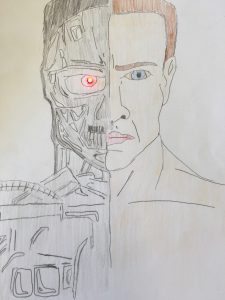Information Visualization Tools allow students to engage and interact with technology to further their math or science knowledge and understanding. They also allow the invisible to become visible. One common area where misconceptions occur in science is with simple and parallel circuits (Brna, 1988). Many students have difficulty taking their knowledge of circuits from linear worksheet diagrams into system and simultaneous projects. To address these misconceptions, I have combined the Info-Vis PhET for simple circuits along with a tangible paper circuit lesson plan. Finkelstein, Adams, Keller, Kohl, Perkins, Podolefsky and Reid (2005) found that students were very successful transferring simulated circuits to real-life situations.


Goals:
- Students will be able to demonstrate basic knowledge of simple circuits and parallel circuits.
- Students will have an opportunity to use their knowledge of simple and parallel circuits in the creation of a paper circuit card
Materials:
- Computers with PhET Simple Circuit Construction Simulation – https://phet.colorado.edu/en/simulation/circuit-construction-kit-dc
- Paper Circuit Materials: Cardstock, 3mm or 5mm LED lights, 3v coin cell battery, paper clip, copper tape, other paper materials as needed (coloured paper, tissue paper, recyclables, etc.)
STEM Activity – 5 Steps
Step 1 – Access prior knowledge by reviewing simple and parallel circuits. Address any misconceptions that arise.
Step 2 – Generate – Students will generate a hypothesis about simple or parallel circuits and the flow of electrons through the circuit.
Step 3 – Evaluate – Students will evaluate their hypothesis using the PhET simulation and share out their findings. What did students notice using the simulation?
Step 4 – Modify – Based on their experiences with the PhET simulation, students will modify their thinking. They will begin to outline their construction of their paper circuit using the information gained from the simulation. Transferring the knowledge from the simulation to the real-world application (the paper circuit) card and go back through T-GEM cycle using real-world circuit.
Step 5 – Extend – Students will extend their knowledge by adding a switch to their circuit.
References
Brna, P. (1988). Confronting misconceptions in the domain of simple electrical circuits. Instructional Science, 17(1), 29-55.
Finkelstein, N.D., Perkins, K.K., Adams, W., Kohl, P., & Podolefsky, N. (2005). When learning about the real world is better done virtually: A study of substituting computer simulations for laboratory equipment. Physics Education Research,1(1), 1-8. Retrieved from https://journals-aps-org.ezproxy.library.ubc.ca/prper/abstract/10.1103/PhysRevSTPER.1.010103
Great work! If you are interested in teaching basic circuits in your classroom a Raspberry Pi with its GPIO (General Purpose Input Output) pins is a great place to start. RaspberryPi.org has a huge lesson repository and their forums are packed with people willing to help out. You can move into motion sensors and distance sensors as well or even teach syntax based languages like Python for more advanced students.
Thanks for a great post Natalie, I like how you have students explore circuits using both PhET and traditional media. Throughout the course, I’ve been reading articles specifically how simulations like PhET embed just the right amount of guidance (that experts do automatically), so that educators can promote free inquiry that interests different students. PhET also minimizes challenges of faulty equipment (batteries, bulbs, etc.) which can be time consuming and frustrating to debug otherwise. Having said that, some articles do present how learners miss out on tangible experience, feeling that software is just programmed to perform. All in all, balance and moderation is key.
Andrew
Hey Nathan,
I’m going to check that out!
Thanks for sharing!
Hey Natalie. Great post. Have you tried using Makey Makey kits in your classroom for increasing creativity to make simple circuits? My students love this. http://www.makeymakey.com
Yes. We invented all sorts of things – musical instruments, games with Scratch, and we “hacked” the library bookdrop. So much fun!
Hi Natalie
I like the fact that you shared the misconceptions on electric circuits. It amazes me the amount of information that is taught in the k-12 system and much of the information stays in the school. I remember having my home being re-wired and I must have been a pain…because I was asking a lot of questions about parallel and simple circuits…that I then brought back into the classroom.
I wonder if you could explain what type of “real-life situations” you would have your students complete.
A good next step might be to tie in the new BC curriculum with your lesson.
To keep the conversation going — make sure to respond to at least two other learners as well respond to all learners that respond to your own post. When responding to other learners, expand the discussion and please use references to support your ideas/thesis/concepts etc.
Christopher
We created interactive greeting cards (both light up LED lights and musical ones) much like the ones we purchase for $10 in the store! Students made them (and some even sold their creations at our school’s Jr. Achievement Business Sale) and they were well received within the school community. Taking a very basic concept and creating a design project (and business) using their circuitry knowledge was pretty real-life and engaging.